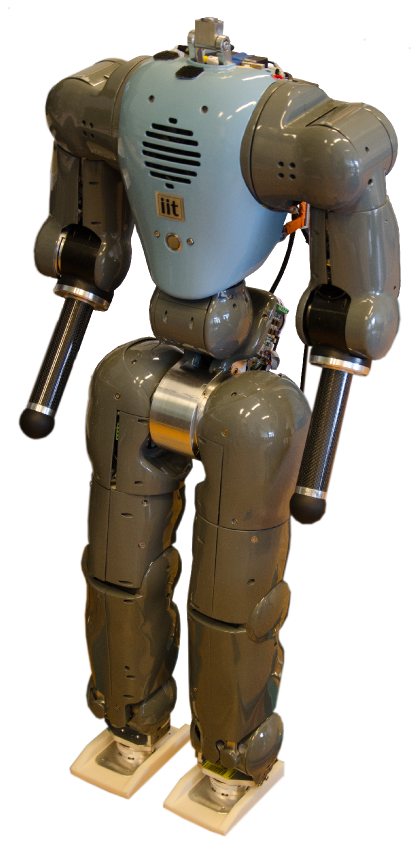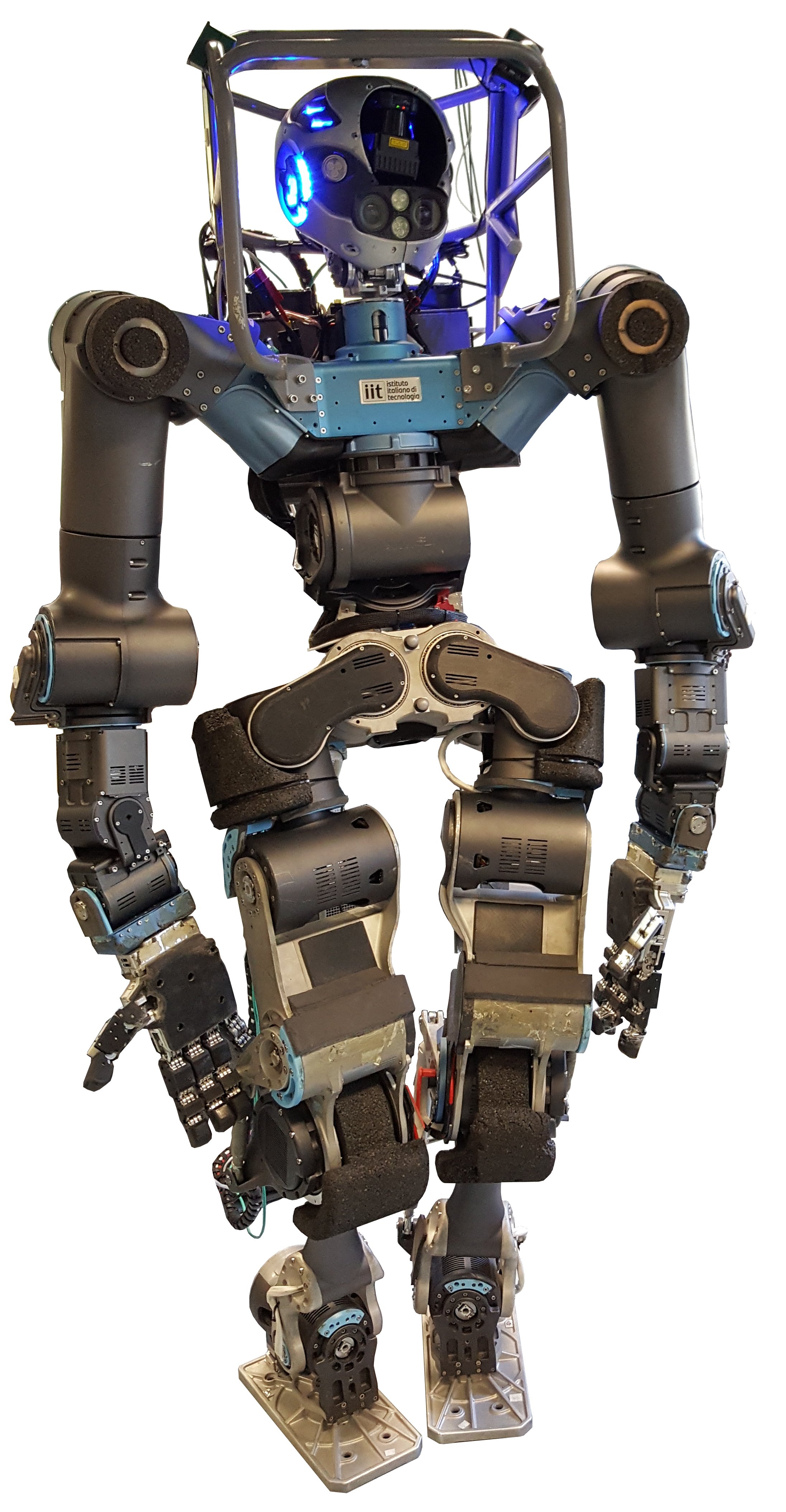Summary
With my background in electromechanical engineering, I developed controllers for humanoid robots to achieve human-like locomotion. More precisely, I took inspiration from the impressive human walking capabilities to design
bio-inspired controllers capable of generating fast, human-like and energetically efficient gaits.
This was tested on torque-controlled biped robots, both in simulation and on real hardware. In particular, gait robustness and richness were two key aspects of this work. In other words, the gaits developed
could be steered by an external operator, while being resistant to external perturbations.
Project context
Locomotion is a key aspect of our everyday life. From traveling to working, it is at the heart of many of our activities. Yet, mobile robots are usually restricted to operate in environments adapted to their mobility.
In a world designed for humans, using humanoid robots is valuable because their body, roughly similar to ours, is potentially perfectly adapted to environments designed for our needs, like ladders or stairs.
There are already many humanoid robots capable of walking. However, they are still far from reaching the impressive human locomotion capabilities, especially regarding energy-efficiency, robustness and behavior richness. Therefore, my work mainly aims at taking inspiration from human locomotion to design bio-inspired algorithms for humanoid robots.
To achieve this purpose, I develop neuromuscular controllers recruiting virtual muscles to drive the robot motors. Because the human neural circuitry commanding these muscles is not known, I make hypotheses about this control scheme to simplify it and to progressively refine the corresponding rules. This project thus offers to improve biped robots locomotion, but also to investigate real human walking, which is far from being understood.
My research is funded by the F.R.S.-FNRS - Fonds de la Recherche Scientifique and by the Walk-Man EU project. In this EU project, two humanoid robots are primarily used as embodiment: the COMAN platform, (Compliant Humanoid) and the WALK-MAN robot. In my work, I mainly use the COMAN platform.
Some parts of my work are presented in the next sections. More information about my work can be found on the Publications page.

COMAN robot

WALK-MAN robot
Gaits generation
The neural circuitry commanding the virtual muscles recruits unknown parameters which must be tuned to obtain the desired behavior (reaching a target speed, minimizing metabolic energy consumption...). Because this tuning is complex and dangerous to perform on the real robot, a simulation environment is first built using the Robotran simulator, with the purpose to reduce the reality gap.
This tuning is then performed in simulation using a Particle Swarm Optimization algorithm. Different particles explore the search space over successive generations to progressively refine the gait.
Real hardware experiment
Once robust gaits are obtained in simulation, the optimized controllers are ported to the real platform without further parameters modification. In the next video, a 2D walking controller is tested. In other words, no lateral balance is implemented. Consequently, I provide lateral stability to the robot while letting it free to move (and possibly to fall) in the other planes.
Gait modulation
In parallel to the hardware experiments, the gait controllers are incremented to add new features. In particular, locomotion richness is obtained by modulating a few controller parameters to steer the gait, resulting in speed and heading adaptation. In the video below, the step length and frequency are modulated to control the walker speed in 3D simulation scenarios.
In the video below, a human operator controls the speed, turning direction and curvature of the robot. This controller extension is based on human turning strategies, to reach the sharpest possible turns.
In the following experiment, the robot walks blindly and must resist to unknown pushes coming from flying balls.
Media
During my Ph.D., I was interviewed by several media (newspaper and TV) about my research.
| Date | Type | Title | Source |
|---|---|---|---|
| January 24th 2017 | Newspaper | Disasters: robots to the rescue | ScienceToday |
| January 28th 2016 | TV | Mise au point à l'UCL d'un robot capable d'intervenir en cas d'accident | RTL-TVI |
| January 26th 2016 | Newspaper | Robot, lève-toi et marche comme un humain | l'avenir |
| January 26th 2016 | Newspaper | Nicolas apprend à marcher aux robots | l'avenir |
| January 26th 2016 | Newspaper | Des robots-sauveteurs lors de catastrophes | l'avenir |
| January 26th 2016 | Newspaper | Un doctorant de l'UCL imagine un robot capable d'ader lors de catastrophes naturelles | Belga |
| January 26th 2016 | Newspaper | Un robot capable d'aider lors de catastrophes naturelles imaginé à l'UCL | Metro |
| Date | Title |
|---|---|
| 2017.01.24 | Disasters: robots to the rescue |
| 2016.01.28 | Mise au point à l'UCL d'un robot capable d'intervenir en cas d'accident |
| 2016.01.26 | Robot, lève-toi et marche comme un humain |
| 2016.01.26 | Nicolas apprend à marcher aux robots |
| 2016.01.26 | Des robots-sauveteurs lors de catastrophes |
| 2016.01.26 | Un doctorant de l'UCL imagine un robot capable d'ader lors de catastrophes naturelles |
| 2016.01.26 | Un robot capable d'aider lors de catastrophes naturelles imaginé à l'UCL |
TV news: Mise au point à l'UCL d'un robot capable d'intervenir en cas d'accident, RTL-TVI (French-language television station in Belgium), January 28th 2016.
